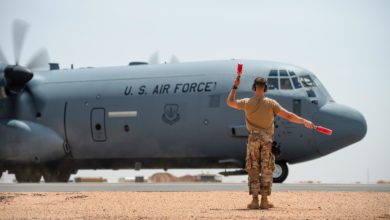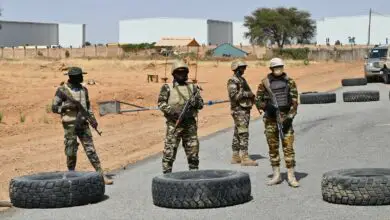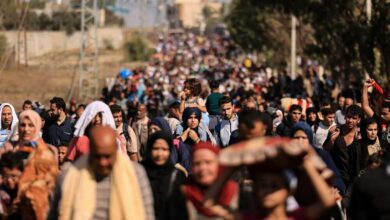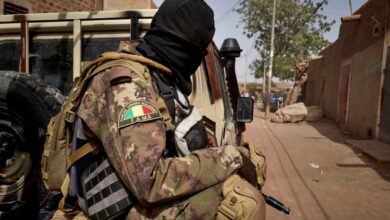Mali: Massacre in Dogon village leaves 35 people dead
A gruesome overnight attack on a village in central Mali left 35 people dead in the latest violence to strike the fragile region, authorities said Monday, June 10.
There was no immediate claim of responsibility but the massacre, targeting a village inhabited by the Dogon community, bore the hallmarks of tit-for-tat ethnic attacks that have claimed hundreds of lives.
It came less than three months after nearly 160 members of the Fulani ethnic group were slaughtered in a village in the Mopti region by a group identified as Dogon.
“This country cannot be led by a cycle of revenge, and vendetta,” Mali’s President Ibrahim Boubacar Keita told ORTM public television from Switzerland, where he said he was cutting short an official visit.
He called on Malians to come together to “allow our nation to survive, because this is a question of survival.”
Local officials in Koundou district, where the Sobane-Kou village was attacked, told AFP 95 people were killed, their bodies burned and others were still missing.
The government, giving a provisional toll, said 95 people had been killed, 19 were missing, numerous farm animals had been slaughtered and homes had been torched.
Update, June 12: That toll was based on early information from soldiers and the district mayor who visited the village, which is also known as Sobane-Kou.
But by Monday night there was some doubt and the revised figure was confirmed the following day, officials said.
“This number is based on a painstaking count carried out by a team comprising officials from the (Malian) civil protection force, forensic doctors (and) the public prosecutor of Mopti” region, Wednesday’s statement said.
About a hundred women had succeeded in fleeing to the village of Koundo, and this was one of the causes of the confusion, it said.
“Armed men, suspected to be terrorists, launched a murderous attack on this peaceful village,” it said in a statement.
A Malian security source at the site of the massacre said “a Dogon village has been virtually wiped out.”
A survivor who gave his name as Amadou Togo said “about 50 heavily armed men arrived on motorbikes and pickups.”
“They first surrounded the village and then attacked – anyone who tried to escape was killed.
‘No-one was spared’
“Some people had their throats cut or were disembowelled, grain stores and cattle were torched. No-one was spared – women, children, elderly people.”
Togo added: “We have counted 95 dead and 38 wounded, with about 20 listed as missing.”
The local official said the village had a population of about 300.
An association of Dogon traditional hunters, called Dan Nan Ambassagou, deplored the “barbaric and vile” attack which it described as tantamount to genocide.
A brutal cycle of violence in central Mali, an ethnic mosaic, began after a predominantly Fulani jihadist group led by radical Islamist preacher Amadou Koufa emerged in 2015.
Since jihadists recruited mainly from Fulanis, they became associated with them, fueling tensions with other ethnic groups such as Bambara and Dogon. The Fulani are primarily cattle breeders and traders, while the Bambara and Dogon are traditionally sedentary farmers.
On May 16, the United Nations peacekeeping mission in Mali announced it had recorded “at least 488 deaths” in attacks on Fulanis in the central regions of Mopti and Segou since January 2018.
In the bloodiest raid, about 160 Fulani villagers were slaughtered on March 23 at Ogossagou, near the border with Burkina Faso, by suspected Dogon hunters.
According to MINUSMA, armed Fulanis had “caused 63 deaths” among civilians in the Mopti region, also since January 2018.
In March, Mali’s government announced it had replaced senior military officers and dissolved the Dan Nan Ambassagou association, composed of Dogon hunters, in the wake of the Ogossagou massacre.
Then, two weeks after mass protests erupted over the the handling of violence in the center of the country, Mali’s prime minister resigned along with his entire government on April 18.
“It’s a shock, a tragedy,” MINUSMA chief Mahamat Saleh Annadif said of the latest bloodletting, noting that it came at a time “when we are discussing the renewal of the [MINUSMA] mandate.”
There are currently about 14,700 troops and police deployed in Mali, which ranks as the most dangerous U.N. mission, with 125 peacekeepers killed in attacks since deployment in 2013.
Donor countries to MINUSMA are to meet at the U.N. on Wednesday. A decision on renewing the force’s mandate is expected by June 27.
UN warning
Speaking at the U.N. headquarters in New York, Annadif voiced regret that the Malian authorities had not been present enough in the area to prevent such violence.
Just a week earlier, U.N. Secretary General Antonio Guterres had warned of a “high risk” of atrocities and called on the government to strengthen its response to extremist groups.
“If these concerns are not addressed, there is a high risk of further escalation that could lead to the commission of atrocity crimes,” he wrote in a report to the U.N. Security Council.
On Monday, Guterres’ spokesperson said the secretary general was “outraged” by the massacre and that he called “on the Malian authorities to investigate this tragedy and to bring the perpetrators to justice.”
Amnesty International echoed the demand, saying the U.N. Security Council should renew MINUSMA’s mandate.
The Malian government meanwhile expressed its condolences and said “every measure will be taken to arrest and punish those responsible for this bloodshed.”
“Reinforcements are currently deployed in the sector and carrying out a wide-ranging search,” it said in a statement.
In 2012 a Tuareg separatist uprising against the state was exploited by Islamist extremists linked to al-Qaeda who took key cities in the desert north.
France began its Operation Serval military intervention in its former colony early the next year, driving the jihadists from the towns, and the MINUSMA peacekeeping force was then established.
But the militant groups morphed into more nimble formations operating in rural areas, and the insurgency has gradually spread to central and southern regions of Mali and across the borders into neighboring Burkina Faso and Niger. Large swathes of Mali remain outside government control.
Koufa in March 2017 joined the newly-formed Group to Support Islam and Muslims (JNIM), the leading jihadist alliance in the Sahel region, with links to al-Qaeda. Its leader is Iyad Ag Ghaly.
The French mission evolved in August 2014 into the current 4,500-strong Operation Barkhane, which has a mandate for counter-terrorism operations across the Sahel, including 2,700 soldiers in Mali to support poorly-equipped local military forces.
Troops deployed to Barkhane work alongside other international operations, including MINUSMA and the regional G5 Sahel joint counter-terrorism force that aims to train and deploy up to 5,000 personnel.
The U.N. Security Council in December 2017 authorized MINUSMA to provide assistance to the G5 Sahel joint Force but only in Malian territory. That support can include medical and casualty evacuations, the provision of fuel, water and food, as well as U.N. engineering plant equipment and material and uniformed MINUSMA engineering units to assist in preparation of bases.
Many Security Council members at the meeting called for “predictable” U.N. funding for the Joint Force, but U.S. Ambassador Jonathan Cohen said bilateral assistance remains the best way to support the Joint Force, and expressed disappointment with calls for funding under Chapter VII of the U.N. Charter.
Despite almost doubling U.S. assistance to the G5 Sahel member states to almost $111 million, that support to Burkina Faso, Chad, Mali, Mauritania and Niger takes the form of “bilateral security cooperation efforts,” rather than direct funding for the joint force, a U.S. Africa Command spokesperson told The Defense Post in November.
UN report calls for maintaining Mali mission, bolstering Mopti deployment
With reporting from AFP











